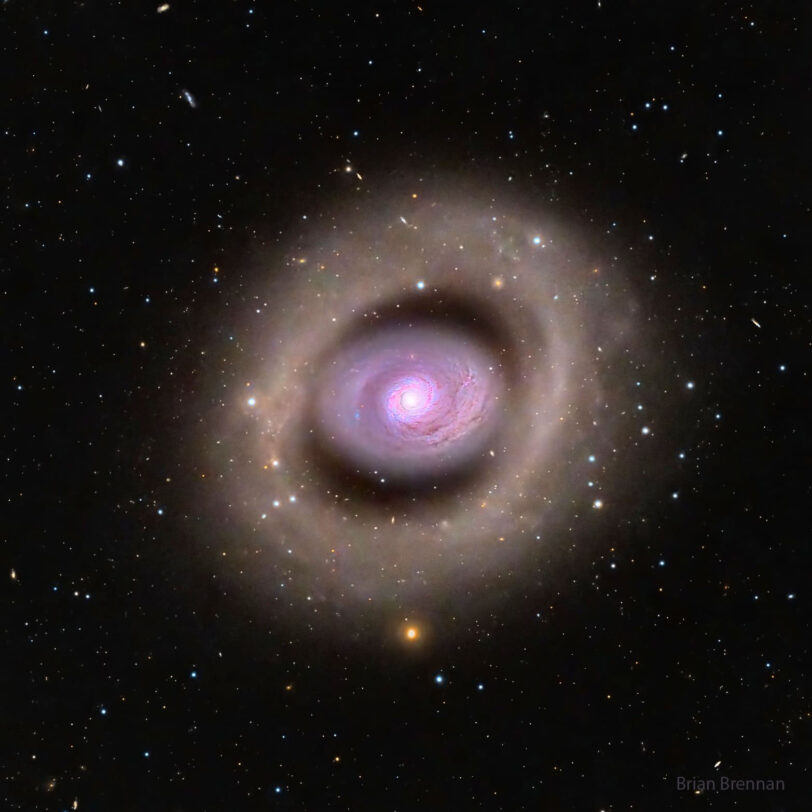M94, also known as the Cat’s Eye Galaxy, is a stunning spiral galaxy located in the constellation Canes Venatici. It was first discovered by Pierre Méchain in 1781 and later cataloged by Charles Messier. The galaxy is situated approximately 17 million light-years away from Earth, making it a distant but captivating object in the night sky.
One of the most distinctive features of M94 is its prominent ring structure, which sets it apart from typical spiral galaxies. It is classified as a “ring galaxy,” characterized by a bright, circular ring of stars and gas surrounding its central core. The cause of this ring formation is believed to be the result of a gravitational interaction with another galaxy in the past, causing waves of star formation to propagate outward in a ring-like pattern.
Inside the ring, M94 exhibits an inner bar structure, which adds to its unique appearance. The bar is formed from the concentration of stars and gas in the central region of the galaxy and is a common feature in many spiral galaxies.
M94 has a high rate of star formation, especially in its ring, leading to the birth of new stars within the galaxy. This phenomenon is a result of the gravitational interactions and compression of gas in the ring, triggering intense starbursts.
The Cat’s Eye Galaxy is relatively bright and easily observable through telescopes and binoculars. Amateur astronomers and space enthusiasts often admire this captivating celestial object for its intriguing shape and distant allure.
As with all galaxies, M94 offers us a glimpse into the vastness and complexity of the universe, reminding us of the endless wonders that lie beyond our own cosmic neighborhood.


